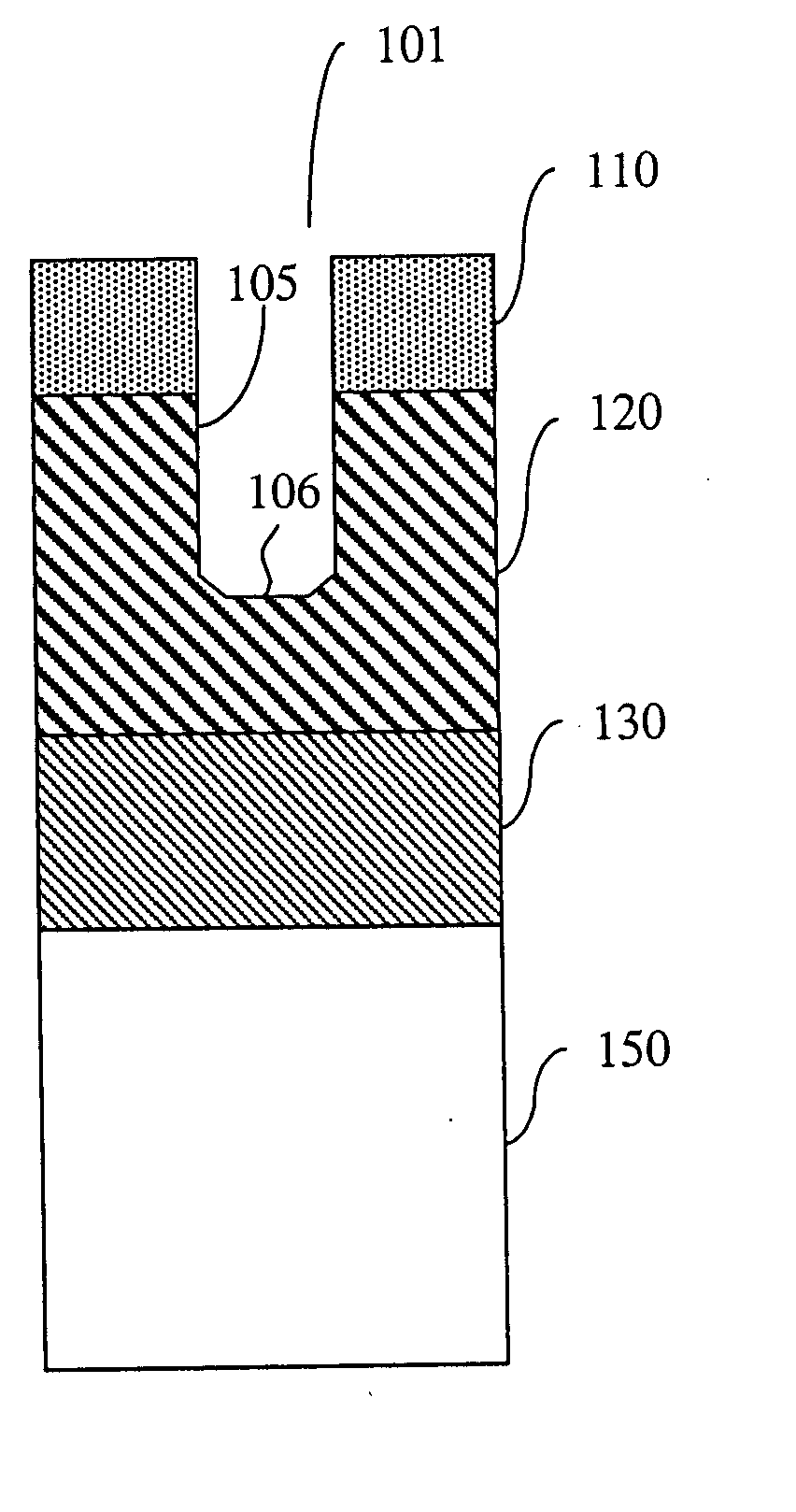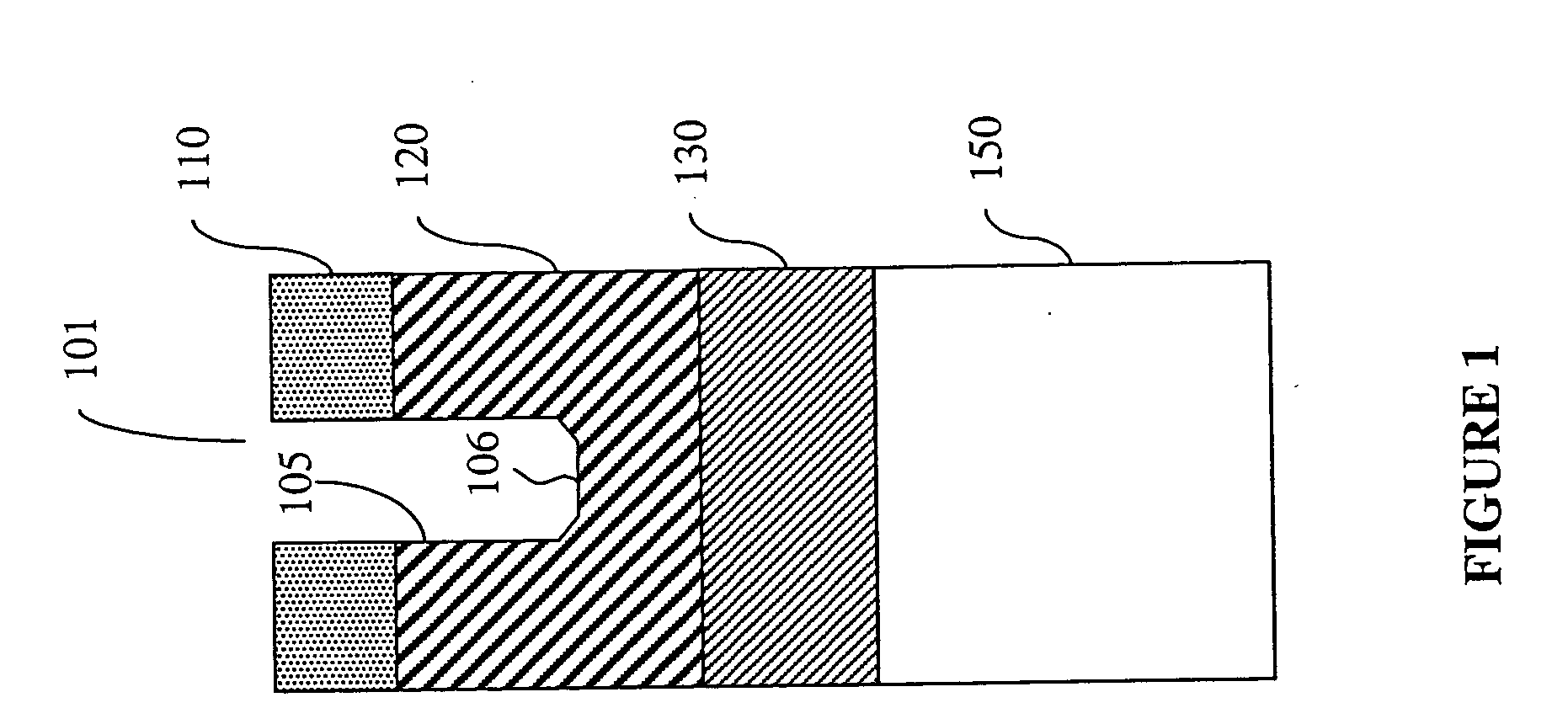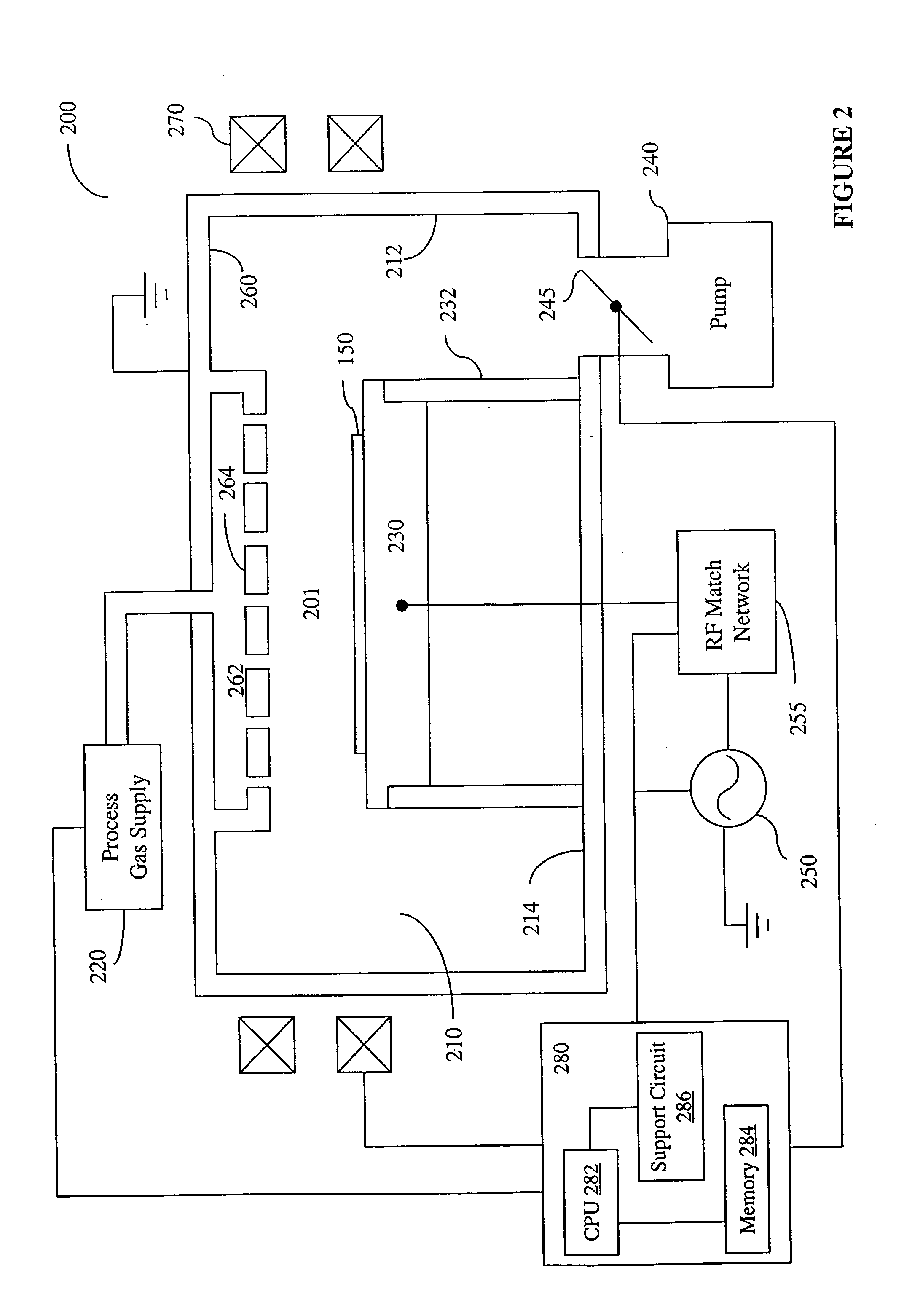Selective etching of carbon-doped low-k dielectrics
- Summary
- Abstract
- Description
- Claims
- Application Information
AI Technical Summary
Benefits of technology
Problems solved by technology
Method used
Image
Examples
Embodiment Construction
The following examples illustrate use of the present invention for etching the low-k dielectric layer 120 on substrate 150. An example of substrate 150 is a silicon wafer of 200 mm (8 inch) or 100 mm (12 inch) diameter. As shown in FIG. 1, the wafer 150 is coated successively with the barrier / liner layer 130 having a thickness of a few hundred angstroms, the low-k dielectric layer 120 having a thickness of about 0.4-1.5 micron, and a mask layer 110 of about 1930 Å that is patterned to define features such as feature 101 to be etched.
In the following examples, the mask layer is photoresist, such as “RISTON,” manufactured by duPont de Nemours Chemical Company. The low-k dielectric layer comprises carbon-doped dielectrics such as CH3 doped organo-silicate glass (OSG), organic polymers (e.g. benzocyclobutene, parylene, polytetrafluoroethylene, polyether, polyimide) or the like that are doped with a carbon-based dopant (e.g. CH3). The OSG is sometimes referred to as doped silicon diox...
PUM
| Property | Measurement | Unit |
|---|---|---|
| Fraction | aaaaa | aaaaa |
| Temperature | aaaaa | aaaaa |
| Temperature | aaaaa | aaaaa |
Abstract
Description
Claims
Application Information
 Login to View More
Login to View More - R&D
- Intellectual Property
- Life Sciences
- Materials
- Tech Scout
- Unparalleled Data Quality
- Higher Quality Content
- 60% Fewer Hallucinations
Browse by: Latest US Patents, China's latest patents, Technical Efficacy Thesaurus, Application Domain, Technology Topic, Popular Technical Reports.
© 2025 PatSnap. All rights reserved.Legal|Privacy policy|Modern Slavery Act Transparency Statement|Sitemap|About US| Contact US: help@patsnap.com



